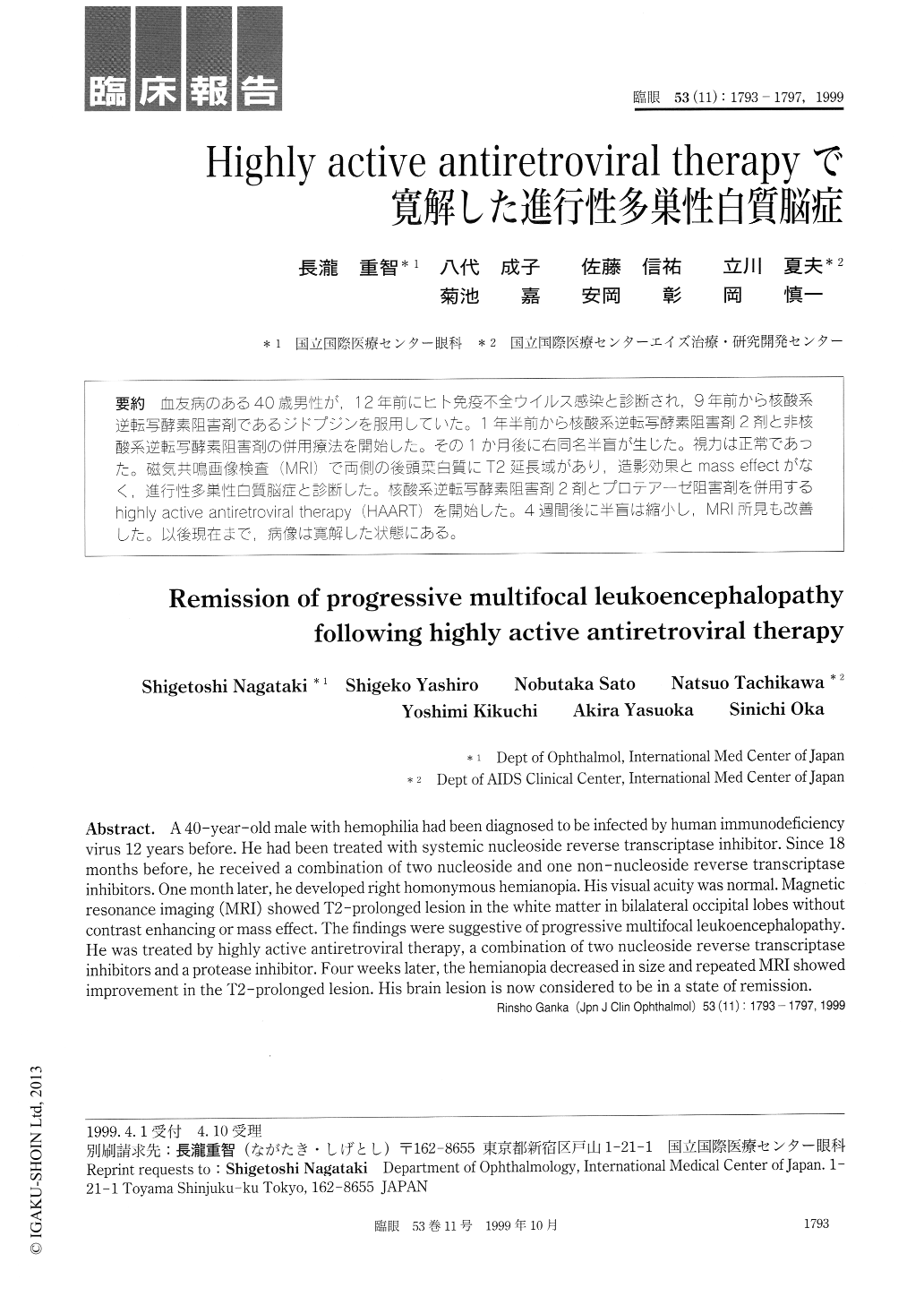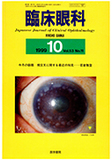Japanese
English
- 有料閲覧
- Abstract 文献概要
- 1ページ目 Look Inside
血友病のある40歳男性が,12年前にヒト免疫不全ウイルス感染と診断され,9年前から核酸系逆転写酵素阻害剤であるジドブジンを服用していた。1年半前から核酸系逆転写酵素阻害剤2剤と非核酸系逆転写酵素阻害剤の併用療法を開始した。その1か月後に右同名半盲が生じた。視力は正常であった。磁気共鳴画像検査(MRI)で両側の後頭葉白質にT2延長域があり,造影効果とmass effectがなく,進行性多巣性白質脳症と診断した。核酸系逆転写酵素阻害剤2剤とプロテアーゼ阻害剤を併用するhighly active antiretroviral therapy (HAART)を開始した。4週間後に半盲は縮小し,MRI所見も改善した。以後現在まで,病像は寛解した状態にある。
A 40-year-old male with hemophilia had been diagnosed to be infected by human immunodeficiency virus 12 years before. He had been treated with systemic nucleoside reverse transcriptase inhibitor. Since 18 months before, he received a combination of two nucleoside and one non-nucleoside reverse transcriptase inhibitors. One month later, he developed right homonymous hemianopia. His visual acuity was normal. Magnetic resonance imaging (MRI) showed T2- prolonged lesion in the white matter in bilalateral occipital lobes without contrast enhancing or mass effect. The findings were suggestive of progressive multifocal leukoencephalopathy. He was treated by highly active antiretroviral therapy, a combination of two nucleoside reverse transcriptase inhibitors and a protease inhibitor. Four weeks later, the hemianopia decreased in size and repeated MRI showed improvement in the T2-prolonged lesion. His brain lesion is now considered to be in a state of remission.

Copyright © 1999, Igaku-Shoin Ltd. All rights reserved.


